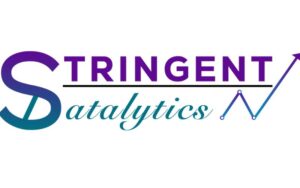Cytokines and chemokines are crucial immunomodulatory molecules. They play a vital role in immune response, including defense systems and inflammation against infectious agents. As cytokines have localized effects and biological activity, their circulating levels are generally low. These low levels are often beyond the detection limits of traditional immunoassays. Hence, evaluating these cytokines using conventional immunoassays is often challenging. Besides, singleplex assays can only assess one cytokine at a time.
Hence, bioanalytical leaders such as pharmacokinetic services focus on multiplex cytokine analysis. Cytokines work in tandem. Therefore, understanding the working of several cytokines together is necessary to decipher the underlying associations with physiological processes. Multiplex methods also reduce the time and cost of analysis.
Bead-based and plate-based assays are the two main formats in multiplex cytokine analysis. Bead-based assays rely on flow cytometry-based analysis of different microbeads. Examples of bead-based assays include the Luminex assay and BD cytometric bead array. On the other hand, plate-based assays are similar to multiplex ELISA cytokine assays. Examples of plate-based assays are chemiluminescence and fluorescence-based assays. Meso Scale diagnostic is one such prominent name in cytokine analysis. They offer assays such as MSD immunogenicity and biomarker assays.
The current article focuses on managing Meso Scale Discovery (MSD) cytokine assay measurement in clinical trials. The article is based on a study that compares MSD ELISA assays with cytometric bead array assays using HIV-infected and uninfected serum samples.
Managing MSD cytokine assay Measurements
MSD recommends eight-point calibration curves. However, adding points at the lower end can increase assay sensitivity. The study demonstrated that adding two points gave a more accurate lower limit of quantification values.
Standard curves gave similar values for all analytes except for IL-8, where MSD was more sensitive. Besides, the lower limit of quantification of IL-8 was 20-fold lower for MSD assays. Hence, MSD offered a better lower limit of quantification and thus more sensitivity in cytokine analysis.
Both HIV-infected and uninfected samples had the same recovery of added cytokines. MSD recovered added TNF-α and IL-12p70 more accurately at lower concentrations. This data indicates that the CBA assays are prone to matrix effects. Moreover, it suggests that the standard curve sensitivity does not necessarily reflect assay sensitivity for endogenous cytokines.
Also Read: What Is The Role Of MSD Analysis In Diffusion?
Overall, the ability of the assays to detect added cytokines depends on the quantity and characteristics of the added cytokines. MSD platforms have intra-assay precision within the predefined limit of less than 25% for all cytokines except for Il-1β. This cytokine has been shown to have poor recovery..
MSD assays quantified cytokines in 9 out of 12 samples. IL-1β was an exception. On the contrary, the CBA assay did not quantify Il-12p70 and TNF-α in any specimens. Besides, Il-10 was quantified in only 25% of the samplings. However, it must be noted that most of the cytokines were below 6.25 pg/ml. MSD assays are more sensitive than CBAs, so these differences in assay performance can be attributed to added cytokines and cytokines in the serum samples.
In Conclusion
MSD assays are robust platforms for cytokine analysis. However, researchers must consider adequate measures to manage MSD cytokine measurements.






